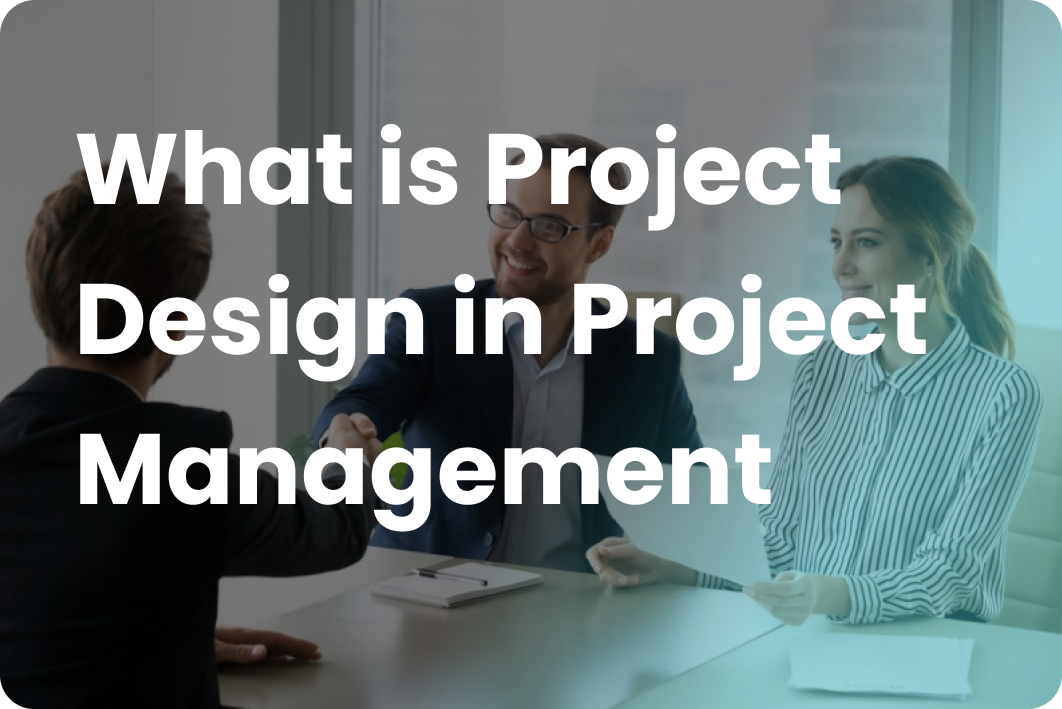What is Project Design in Project Management
Designing a successful project is the first stage. A project design is a way for organising ideas, materials, and procedures to accomplish a specified purpose. The goal is to create one or more designs that will help the project accomplish its objectives. Stakeholders may then select the best design to employ for project implementation. Sketches, flowcharts, site trees, picture impressions, and other outputs may be generated throughout the project design process.
Why is Project Design important?
Processes are sometimes disregarded in our sector, although they are critical for a variety of reasons. This phase of the project will determine who is in charge of defining, characterizing, and finishing the project. Design thinking is a crucial skill during this stage for good project management later on. Design thinking is an effective problem-solving strategy that may be divided into three stages: collaboration, invention, and acceleration.
What is Project Management?
Project management is the use of techniques, methods, skills, knowledge, and experience to achieve particular project objectives within agreed-upon constraints. It has final outputs that are limited in time and money. It entails the planning and organizing of a company's resources in order to complete a certain work, event, or obligation. Project management is basically divided into five stages.
Stage 1: Beginning
This project management phase marks the start of the project and is when the project charter is created and stakeholders are identified.
Stage 2: Preparation
This is the stage during which the project plan is created. This includes estimating expenses, determining resources, and defining requirements.
Stage 3: Implementation
During this project phase, the project is carried out while resources are procured and stakeholder expectations are managed.
Stage 4: Controlling
This phase is frequently performed concurrently with execution since it is where quality, scope creep, and cost/time allocations are checked.
Stage 5: Closing
This is the stage of project management where the project is completed and the deliverable is handed over to the customer and stakeholders.
Project Design Uses
1. Clear objectives - Knowing what you want to do enhances the probability that you will complete it.
2. Better odds of meeting objectives - Including milestones in the project plan is one of the most effective strategies to track project progress.
3. Risk assessment - Thorough project planning entails doing a thorough assessment of all potential risk variables.
4. Better communication - Planning enables communication, which helps your staff understand what is expected of them.
5. Identifying task dependencies - A project plan informs project managers which tasks have dependencies and enables them to schedule them.
6. Efficient resource allocation - Planning a project tells the team which resources will be needed to accomplish the project.
How to create a Project Design
There are procedures for defining projects and developing an implementation strategy. They are the most important stages in the development of a project.
1. Vision - Identifying the project's aim. The vision statement is a formal document that defines the potential for the project. It is given to stakeholders to illustrate the viability and advantages of the project.
2. Understanding the problem - In order to support that vision document, you must first identify a problem that must be solved. As a result, a requirements assessment is usually necessary in order to identify the company's difficulties
3. Resource planning - The next phase is to determine the resources needed to finish the project. People, equipment, and facilities are all kinds of resources required to effectively complete a project.
4. Defining project objectives - An objective is the same as a solution to a problem. Create a goal statement that describes how the project's objectives will be fulfilled.
5. Process strategy - In order to fulfil the project's goals, a plan must be in place. A strategy is a means for attaining project objectives while adhering to project constraints such as resources, schedule, and money.
6. Creating an appropriate budget - The budget outlines the financial resources required to finish the project. A budget will be created for each of the project requirements.
7. Provide a project proposal - This all culminates in a project proposal that describes why the project should be carried out and what advantages it would provide.
Master Project Design with PMP Certification Training
PMP certification is the flag banner for project managers. This course covers the most recent best practices from the PMBOK Guide, as well as the most recent PMP Examination Content Outline. Enrol today to learn from experts and pass the PMP test on your first try. This course examines current project management trends, emerging practices, change concerns, and the basic competencies required of today's project management professionals.
